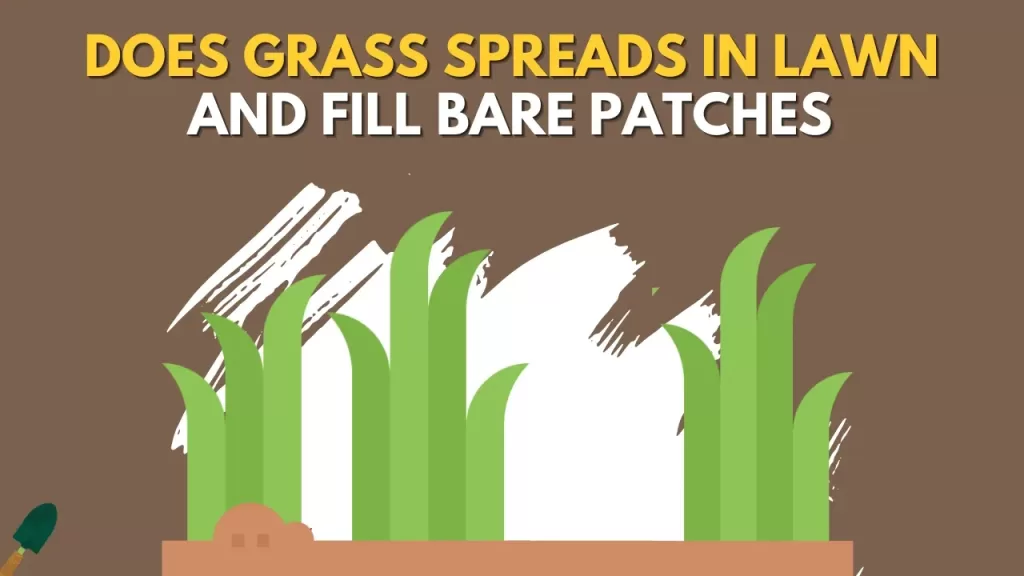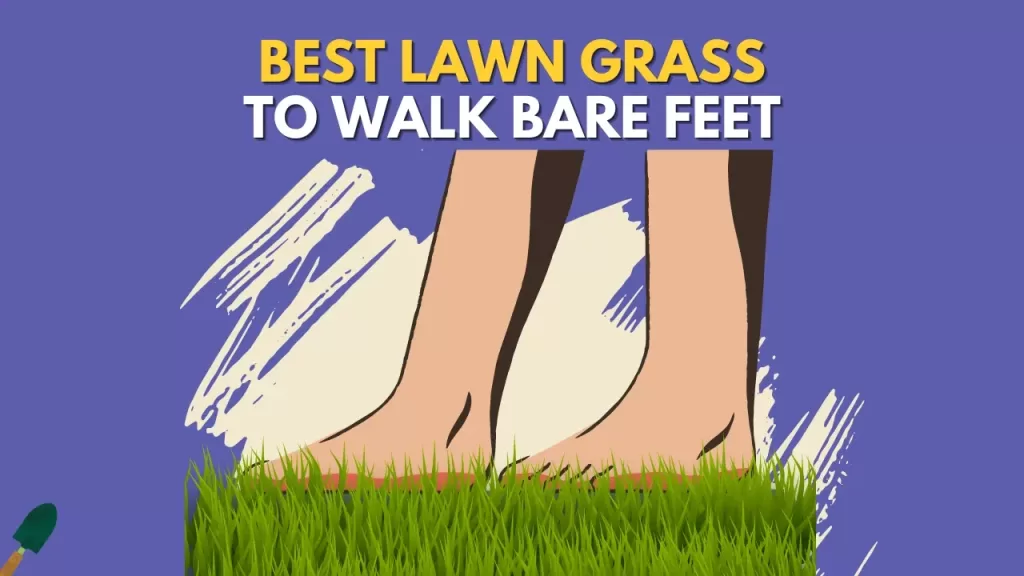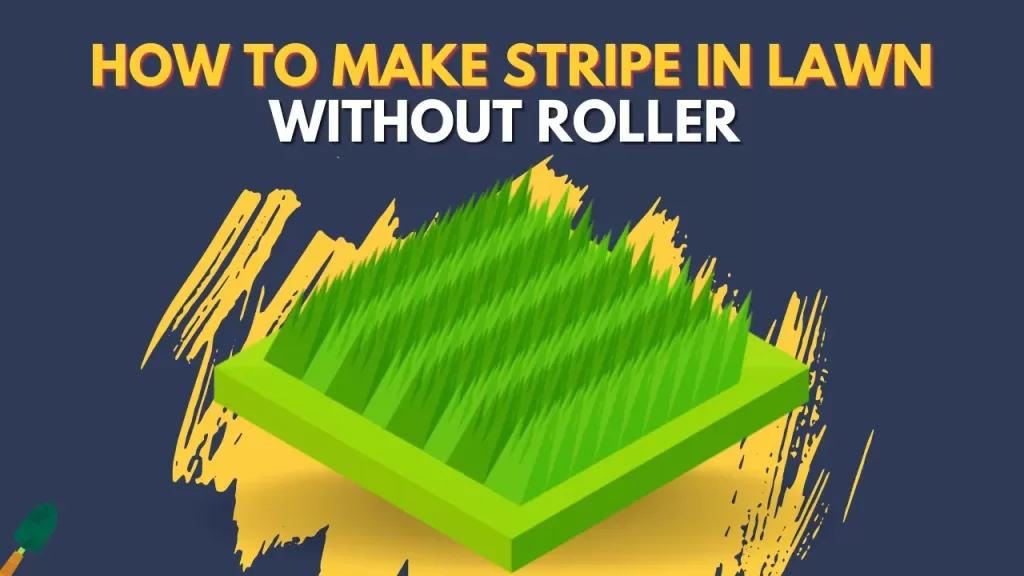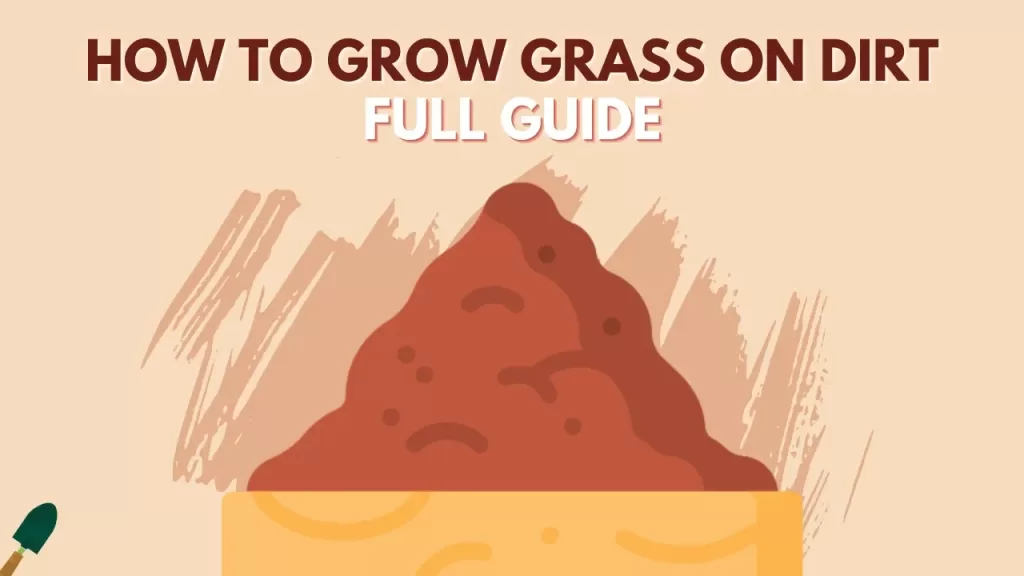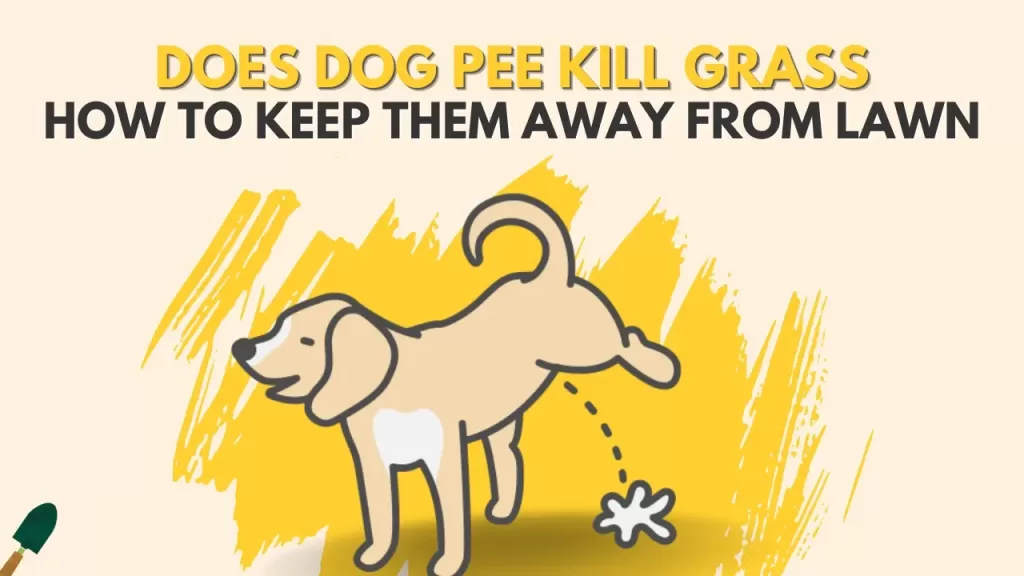Every lawn owner has a fear of seeing bare patches on their lawn. We all want our lawn to be lush green and thick and beautiful lawn. But sometimes patches eventually happen on the lawn.
So would these patches be filled by themselves by the grass or not?
Yes, grass can spread in the lawn by seed, stolon, tillering, or rhizomes. But the grass takes a lot of time to spread from these methods and can’t cover a big area by spreading. This makes it difficult for the grass to fill large patches in the lawn which you need to reseed by yourself.
You now know that grass spreads but how it spreads and what are the different methods? Let’s discuss these in detail.
How does grass grow?
The grass is grown basically with the help of seeds. The seeds germinate and establish roots in the soil and shoot green leaves above the ground.
The roots grow from the crown to take water and essential nutrients from the soil. After the initial root development, the new root is branched out from the tip of the old root and expands in search of water.
Other plants grow new stems and leaves on already-formed stems but in grass new leaves are grown independently from the crown of the grass.
In most plants, the new growth is at the top but in the grass, the leaf starts to grow from the bottom, that’s why you can cut the grass regularly but not the other plants.
How does grass spreads?
Grass mainly grows with the help of seeds but can spread and grow in four different ways. Let’s talk about these methods:
- Seed – the first way the grass spreads is with the help of seed but you don’t see any seeds developing from the grass in your lawn as grass needs time to grow bigger and older to develop flowers and produce seeds from it.
But we mow the grass short, eliminating the possibility to develop any flower. Sometimes, some lawn owners complain of seeing something white growing from their lawn. That white thing is nothing but the flower developing in the grass.
If you want the grass to spread in your lawn, don’t depend on this method because the mowing grass doesn’t get mature enough to develop flowers and produce seeds although some grasses have adapted to mowing and started developing seeds very low to the ground.
- Tillering – a tiller is a new shoot growing from a bigger grass crown. It is a new part of the bigger grass plant branching out from the crown just like a stem growing from another stem.
The difference is just that it also grows from just above the ground and not from the top. Tillering usually makes the mother plant thicker and wider and makes your lawn look thick.
Almost all of the grasses spread with the help of tillering and these types of grasses are called bunchgrass. The most common bunch of grasses are perennial ryegrass and bermudagrass.
From tillering, the grass doesn’t spread a lot and just thickens itself so you cannot rely on the tillering of the grass to fill bare spots in your lawn.
- Stolon – stolon is a way which the grass uses to establish itself on the lawn. Stolons have vine-like characteristics which branch out from the crown of the grass and run above the ground and grow near or far from the mother plant.
The stolon grows a new grass plant. The stolon can be very good for spreading grass in the lawn as it can establish itself anywhere on the bare spots from the mother plant
- Rhizome – rhizomes are very similar to stolons but establish themselves under the ground and then grow a new plant. Rhizomes also branch out from the big grass plant beneath the soil and then produce a new grass plant in bare patches near or far from the soil.
Rhizomes can fill a bare patch of your lawn but the process takes time and needs the care to thrive in your lawn.
Why do you have bare patches on the lawn?
Lawn can have bare patches for many reasons and it looks ugly and bad. So to fix these bare patches first we need to understand why these patches are developing in the lawn.
- Dog urine – if you have pets in the house and they go to urinate in the lawn, then it can be a problem to your lawn and create patches. In the lawn where the dog urinates frequently.
The dog urines contain a high concentration of nitrogen which is a very essential nutrient for the plants and grass to grow in the lawn but can cause over-fertilization due to frequent urination of the dog in the same spot on the soil and it can burn the grass due to high concentration.
In the beginning, you will see the grass turning yellow and then brown due to overfertilization and the brown grass won’t come back as it is dead completely.
- Shade – as we all know every plant needs some kind of sunlight to grow. Some plants need less sunlight than others. It’s the same for the grasses as well. Some grasses need less sunlight than others.
If your lawn has grass that needs a lot of sunlight to grow then a little bit of shade can block the growth of the grass or make a patch there. If your lawn has perennial ryegrass or Kentucky bluegrass then there is a possibility of patches in your lawn due to shade as it needs a lot of sunlight and can’t tolerate shade.
To see if your lawn has some shade of any kind due to a tree or other things, try to remove those or plant shade-tolerant grass there like fine fescues.
- Less watering – watering can also be an issue that can create patches as water is very essential for any plant to grow and thrive. If your lawn has improper watering or some part of the lawn doesn’t get enough water then it can make the grass die or at least stop growing.
So take care that all of the lawn gets proper watering. If you have a sprinkler system then check whether they cover the whole lawn by placing a cup in the lawn in different places and measuring the water after watering.
- Over-watering – overwatering can also kill grass in your lawn and create small or big patches which can look ugly. If your lawn has more water than it needs or water pool in some places, it can make the roots rot and the grass can die. So make sure you don’t overwater your lawn and excess water gets drained away very easily from the lawn.
- Foot traffic – Heavy foot traffic can also cause patches on the lawn. Some grasses are not tolerant to foot traffic and they can die from it. So keep away your pets from the lawn and make a path in the lawn where there is heavy foot traffic with stones or concrete. If your whole lawn gets some kind of foot traffic then reseed your lawn with grass that can tolerate foot traffic very well like zoysia grass.
Will grass spread and fill these patches?
Grass can sometimes spread and fill bare patches in the lawn, but it depends mostly on the size of the patches in the lawn and the type of grass in your lawn.
If your grass grows with the help of a rhizome or from tillering then it can be possible for the grass to fill small patches of the lawn but filling big patches by the grass is very difficult as filling big patches needs seeds to grow new grass but short grass doesn’t produce seed.
Grass needs to grow big and thick to first produce flowers and then produce seed from it to spread it in the lawn to grow new grass but we mow our lawn very frequently and don’t allow the grass to produce flowers.
The only option for you to fill big bare patches in your lawn is to reseed your lawn.
How to reseed a bare patch in the lawn?
Prepare the soil – To reseed the bare patch on your lawn properly, you need to first repair the soil in the patch and remove the problem which caused the patch in the first place. To see what the soil needs first do a test and see the nutrients level and the acidity in the soil.
After that, prepare the lawn, first, you need to remove the dead grass and dethatch it then aerate, and then apply fertilizer and garden lime if necessary.
Dethatch – dethatching is the process of removing old, dead grass from the lawn to make way for the new grass seeds to grow properly on the lawn.
Aerate – after dethatching, see if the soil is tight and compacted by the foot traffic or other reason or it is loose. If the soil is compacted then you need to aerate the soil with the help of an aerator or with the help of a rake.
Fertilize – after you have dethatched and aerated the soil, fertilize it with a starter fertilizer to give the new seeds a boost the germination and grow easily and faster with proper nutrition.
Apply lime – in the soil test if you see the soil is acidic then you need to apply lime to the soil to reduce the acidity of the lawn and make the soil healthy for the new grass seeds to grow easily and properly.
Choose the seed – choosing the seed is very crucial as if the patch is created with a lot of shade then you need to choose a seed that is shade tolerant or if the patch is caused by foot traffic then you need to choose a grass that can do well in traffic.
Spread the seed – spreading the seed properly is very crucial as if not done properly can also create small patches in the lawn. Split the seed into two parts for the patch and apply the first batch vertically and the second one horizontally to cover up the whole patch properly.
Rake – after seeding, rake the soil lightly to get the seed into the soil and a thin layer of soil over the seeds for proper germination.
Water – after the seeding raking, do light and frequent watering in the patches to keep the soil moist for the germination of soil. After a week, reduce the frequency of the watering and do increase the amount of water to make a deep root system for the grass which will make the grass healthy and drought resistant.
Maintain – maintain the lawn is very necessary to keep it healthy and thick and keep the patches away from the lawn. To maintain the lawn to deep and infrequent watering. Mow the lawn regularly removing not more than 1/3rd of the grass and fertilizing every 5 to 6 months with a slow-release fertilizer.
HOPE YOU FIND OUT ALL THE ANSWERS. KEEP GARDENING

